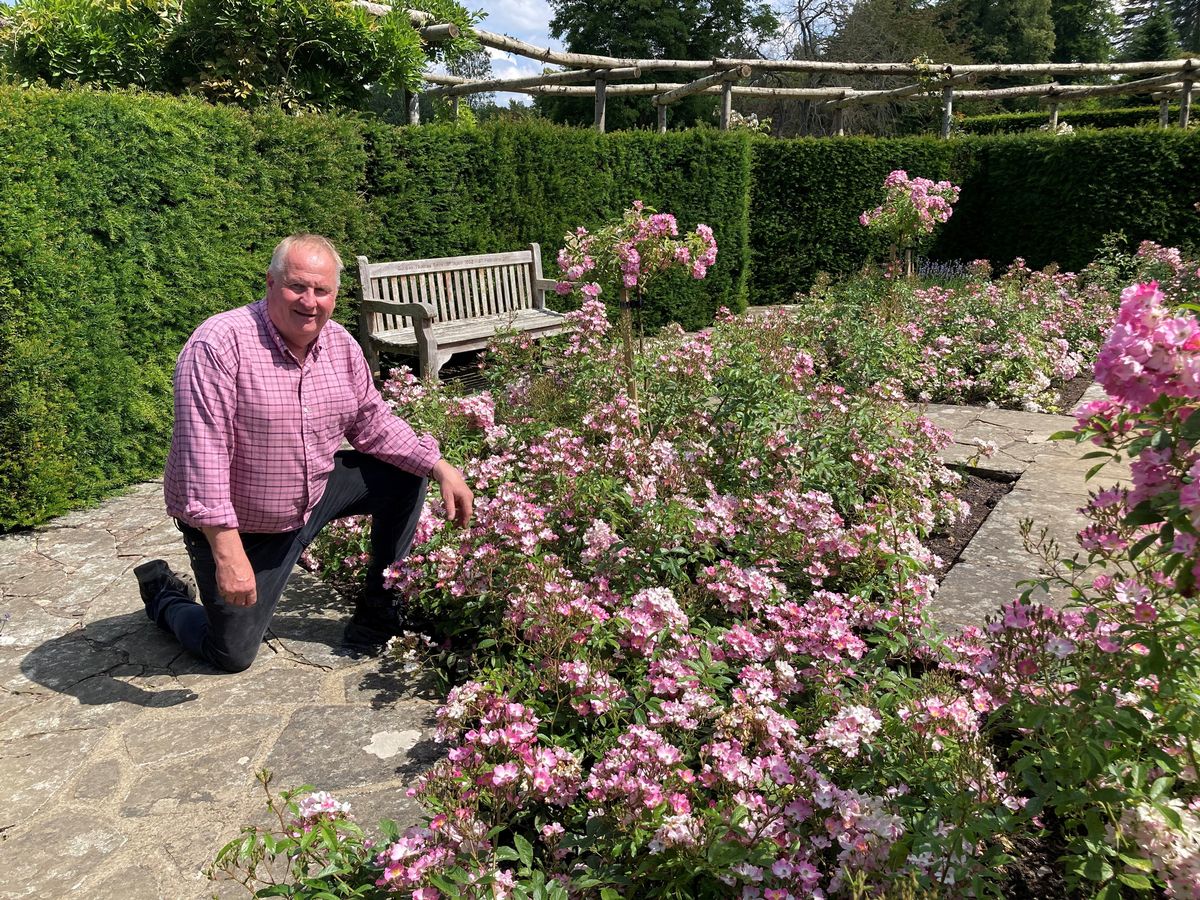Black spots on your roses can be a common problem – but there are ways to rid your blooms of them. Dark brown or black blotches on the leaves of your roses can often turn yellow and fall off prematurely, which means its is likely they were infected by this fungus. Spots usually appear on leaves from early summer and spread rapidly. Damp weather can worsen the issues, while badly affected plants can shed all their leaves, which can weaken the rose. Black spot (Diplocarpon rosae) overwinters on fallen leaves and also in dormant infections on young stems and buds, producing spores in the spring to infect young foliage. According to Neil Miller, head gardener of Hever Castle & Gardens in Kent,there are steps you can take to prevent and treat it. READ MORE: DVLA alert to all drivers over task you ‘must’ do or risk £1,000 fine Neil said: “Roses tend to get black spot once the rain comes in the summer – it encourages the spread of this fungal disease. “It can spread from year to year. The yellowed leaves fall to the ground and the spores stay in the earth and can transfer to new rose growth the following year. “Practising good garden hygiene is the best way forward – collecting and incinerating fallen leaves in the summer to prevent the spread, and cutting out any diseased stems. “Keep clearing any fallen leaves, ensure you cut out any dead wood, keep dead-heading the blooms and mulch every year.” Neil said: “You can pick off the spotted leaves (wearing gloves) to remove the source of reinfection. “And remember, each fallen leaf must be removed from the ground – ensure you collect every one. “It only takes a leaf or two, over winter, to keep the problem going into the following year.” Neil said: “When you plant your new rose bushes make sure they’re planted in an area where air is not restricted – you need a free-flow of air around your bush.” According to Neil, rose growers should try to incorporate organic measures like apple cider vinegar spray or even a milk spray and lemon juice. He said: “Fungus tends not to enjoy being sprayed with apple cider vinegar, so that’s good option – it’s also safe for the all-important bee population.” Neil said: “Another key to promoting healthy roses is to feed them with a granular slow-release food at the start of the season and after the first flush in July. “Take your feed and draw a little circle with it around the base of the plant, make sure the feed doesn’t scorch the leaves.” If you mulch around your roses, it will help stop the spores from splashing up from the ground. Neil said: “Rose selection is very important. So when you’re leafing through your bare root catalogue this autumn, look out for rose species that are either specifically bred to be disease-resistant like the peach shrub rose ‘Dame Judi Dench’ (David Austin) or select the older gallica or rugosa varieties which tend not to suffer from black spot. “In the Rose Garden itself we have removed plants over the years which have been particularly susceptible to disease and have selected more modern varieties that repeat bloom throughout the summer, rewarding visitors with an incredible display. “Among our current favourites are ‘Absolutely Fabulous’ – a wonderful yellow rose that looks healthy year on year, ‘Lucky’, and ‘Audrey Wilcox’. “We removed ‘Rhapsody in Blue’ two summers ago and planted the more resistant, and floriferous ‘Timeless Purple’ in its place. ‘Timeless Cream’ has also performed very well for us over the past couple of years.” But, the RHS warns that the fungus is genetically very diverse and new strains arise rapidly. This means that the resistance bred into new cultivars usually fails to last because new strains of the fungus arise to overcome it. Hever Castle & Gardens has more than 5,000 roses in bloom in June and July. Its Hever In Bloom event runs from June 23-July 6, featuring garden tours, flower arranging workshops and other events.
